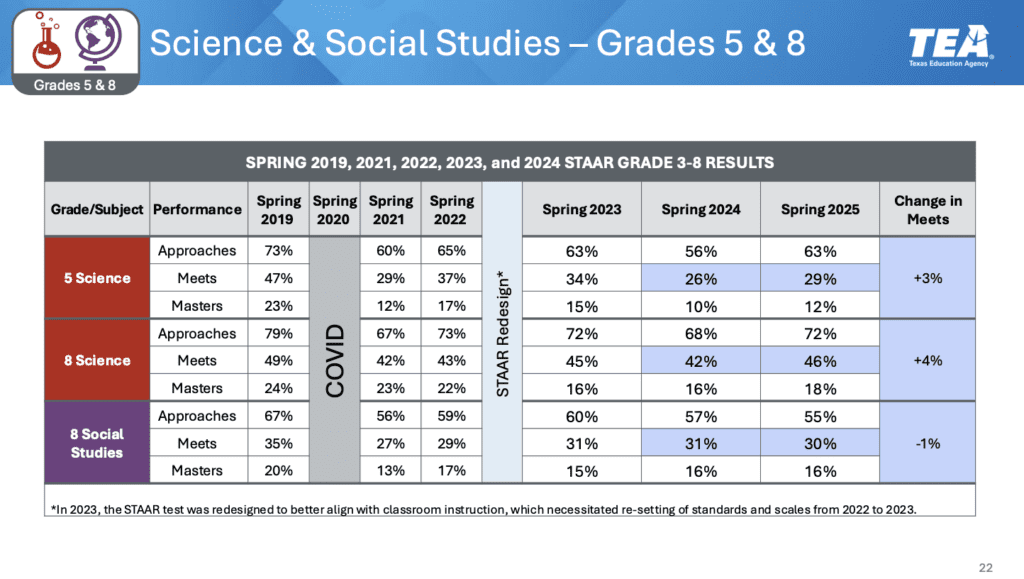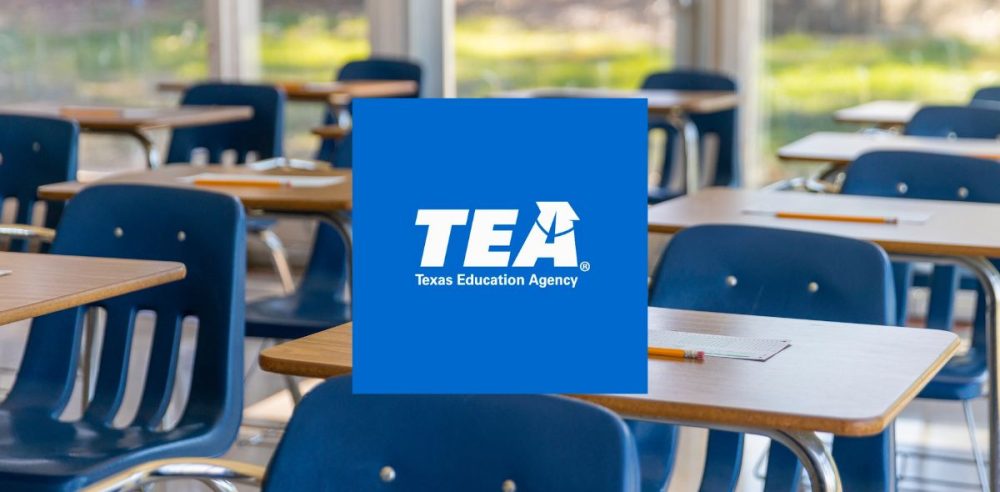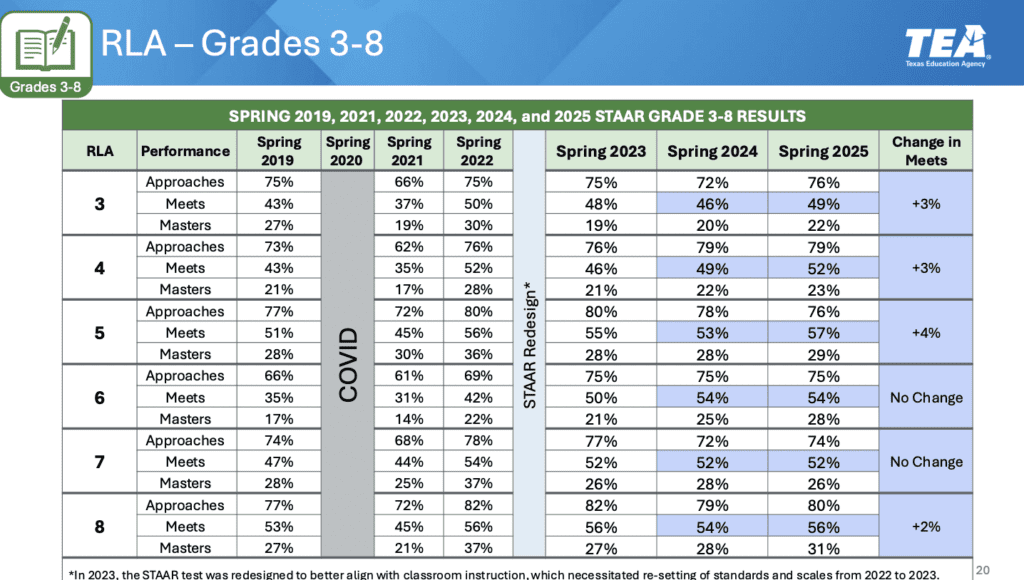(Texas Scorecard) – Newly released academic assessment results for Texas elementary and middle school students are “encouraging,” according to the agency that oversees public education—even though a quarter to a third of the students failed to even approach grade level in reading and math.
On Tuesday, the Texas Education Agency released results of the 2025 State of Texas Assessments of Academic Readiness (STAAR) for students in grades 3-8.
The results include assessments in math and reading/language arts (RLA) for 3rd-8th grade students, as well as 5th and 8th grade science and 8th grade social studies.
The TEA stated that the scores are “a clear indication that the targeted instructional supports and recovery strategies are yielding meaningful outcomes for Texas students.”
The agency called this year’s reading results “promising,” as the statewide percentage of students meeting grade level surpassed pre-pandemic performance levels.
“These results are encouraging and reflect the impact of the strategic supports we’ve implemented in recent years,” said Texas Education Commissioner Mike Morath. “With RLA scores now surpassing pre-pandemic levels, we are seeing meaningful signs of academic recovery and progress. While this year also saw some improvements in math, clearly more work is needed.”
The standardized academic achievement tests are designed to “measure the extent to which a student has learned and is able to apply the defined knowledge and skills in the Texas Essential Knowledge and Skills at each tested grade, subject, and course,” according to the TEA website.
For most subjects and grades, the 2025 STAAR results show the percentages of students performing at grade level increased from 1 to 5 points compared to 2024.
Yet the percentages of students meeting grade level remain low to dismal across the board.
Reading results show 49 to 57 percent of students met grade level.
In math, 31 to 45 percent performed at grade level, while for science and social studies, the results ranged from 29 to 46 percent meeting grade level.
 In reading and math, a quarter to a third of students failed to even approach grade level.
In reading and math, a quarter to a third of students failed to even approach grade level.
Still, the 2025 reading results are a reversal from last year.
The TEA’s annual report for the 2023-24 school year showed reading and math scores for 3rd- and 8th-graders had declined 2-3 percentage points from the previous year.
Scores from the 2024 National Assessment of Educational Progress (NAEP), known as “The Nation’s Report Card,” showed Texas 4th-grade students’ reading scores dropped two points from the previous tests in 2022 and were two points below the national average. Just 28 percent scored as “proficient” or better in reading.
STAAR is unpopular with many Texas parents and teachers, who say it puts too much pressure on students to pass and forces educators to spend too much time “teaching to the test.”
Legislation to eliminate the high-stakes testing failed to pass during this year’s recently concluded legislative session.
Parents can view their students’ individual STAAR results by visiting their school district’s family portal or TexasAssessment.gov using the access code provided by their child’s school.




